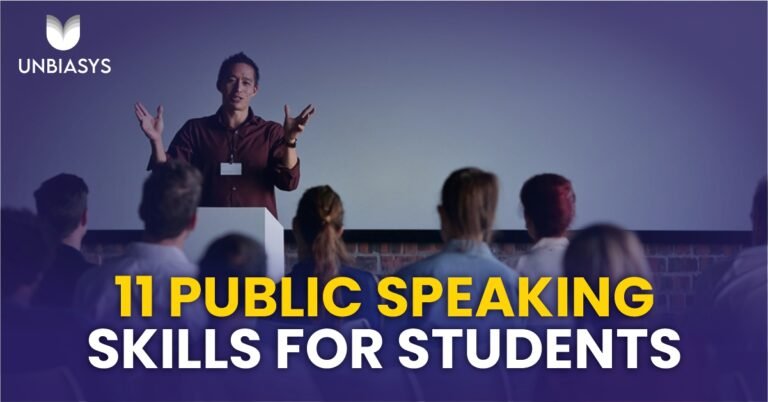Table of Contents
Writing a resume or CV is an essential part of applying for jobs. It’s also a crucial step in landing your dream job. However, writing a resume or CV isn’t always easy. There are lots of different ways to write a professional resume or CV. Some people use templates while others prefer to create their own. Either way, there are certain things you should keep in mind when writing your resume or CV.
You may be wondering why you would need a sample resume. The truth is that most companies require applicants to submit a resume before they even apply for a position. This means that you need to know what kind of information you should include on your professional resume.
In this article, we’re going to give you some tips on how to write a resume or CV effectively. A good resume or CV is one that stands out from the crowd and gets noticed by hiring managers. If you’re looking for a new job, you need a great resume or CV to get the attention of potential employers.
What is a CV or Resume?
A CV or resume is an individual’s summary of their educational background and work experience. It is used to apply for jobs and graduate school. A well-written resume should be no more than one page in length. This page can include your contact information, education history, employment history, skills, volunteer activities, awards, honors, hobbies, and any other relevant information that you think would help employers make a decision on whether to hire you.
The format can vary depending on the employer’s needs. For example, if a company asks for a specific type of resume, it will usually have its own template.
The goal of a resume or CV is to highlight your skills and experience. You want to make sure that every section has something relevant to show off. Your resume or CV should contain at least three sections:
• Personal Information
• Education & Work Experience
• Skills & Qualifications
Personal Information
Your personal information includes your name, address, phone number, email address, and any other contact details you’d like to share with a prospective employer. Next, you’ll list all of the schools you’ve attended. Finally, you’ll provide information about your work history.
Education & Work Experience
This section of your resume or CV should focus on your education and work experience. Start by listing your educational background. Include both high school and college/university degrees. List your GPA as well as the major subjects you studied. Then, briefly describe your previous jobs. Make sure to mention any certifications or licenses you hold.
Skills & Qualifications
Finally, you’ll list your skills and qualifications. In order to stand out, your skills should relate directly to the job description. Don’t just list general skills such as “communication,” “problem-solving,” or “teamwork.” Instead, think about which skills you have that could help you succeed in the role.
Why Do You Need a Great Resume or CV?
The CV or resume is the first impression that potential employers get when they see your name on a job application. It is the most important piece of paper you have ever written. You want to make sure that it is error-free and stands out from all the others. If you are applying for a job with a large company, chances are that there are hundreds if not thousands of resumes being submitted at any given time. The person reviewing these applications has very little time to review each resume. They need to find the best candidates quickly so they can move on to the next applicant. Therefore, your resume needs to stand out among the rest.
Difference Between CV and Resume
While both a resume and curriculum vitae are used to introduce yourself to potential employers, a Curriculum vitae focuses more on your personality. On the other hand, a resume is used to showcase your skills and accomplishments.
When you start creating your resume or CV, it might seem overwhelming. That’s because resumes can look very similar. To avoid confusion, here’s a quick overview of the difference between a resume and a CV.
Resumes vs CVs: What’s the Difference?
A resume is used to present your career history and skills. It highlights your education, employment, and training experiences.
A curriculum vitae is a detailed version of your resume. It typically lists your academic achievements, awards, and honours. It also includes your hobbies and interests.
If you’re applying for a job online, you may receive a generic form. However, most companies prefer to see a resume or CV formatted according to their specifications.
Do’s and Don’ts CV or Resume
It’s important that your CV stands out from all of the others on their desk. Let us look at things you should do when writing a resume or CV –

Do Write A Strong Introduction
The first paragraph of your CV is often the most important one. Use this space to tell an employer who you are and why you’re interested in working there.
Do Make Sure Your Contact Details Are Up To Date
Make sure to include your email address and phone number at the top of your resume. Include your social media profiles as well.
Do Keep Things Short And Simple
There’s no point in writing a whole page about how much money you made last year if you only earned 10k. Keep each section brief and to the point.
Do Proofread Your Document
After you’ve written your resume or CV, spend time editing it. Make sure that spelling mistakes have been corrected, punctuation has been added where necessary, and grammar and syntax errors have been removed. You can do this before printing or sending it off. Proofreading helps ensure that your resume is easy to read.
Do Tailor Your Resume To Fit The Position
If you’re looking for a new job, you need to be prepared to answer questions about why you’re leaving your current position. Therefore, you should tailor your resume to match the requirements of the position you’re applying for. For example, if you’re applying for an administrative assistant position, you should include information about your organizational skills and customer service abilities.
Do Highlight Your Accomplishments
Be sure to mention any awards or recognitions you received during your career Also, include any achievements that relate to the job you’re applying for.
Do Include Bullet Points
Bullet points are used to quickly describe what you did during your career. They’re good for highlighting key achievements and skills, but don’t use them if you want to list every single project you worked on over the years. Instead, try using subheadings instead. This way, when you read through your CV, you won’t be overwhelmed by information overload.
Do Include A Summary
This is a concise overview of your career history and highlights your key strengths and qualifications. It’s also a chance to mention any awards you’ve received.
Do Include A Cover Letter
Cover letters are optional; however , they can improve your chances of getting hired. A good way to stand out is to personalize your cover letter. This means including information about yourself and highlighting your strengths and qualifications.
Here are some common mistakes that you should avoid when writing a resume.
Also Read: How to prepare for a Job Interview & Get Hired
Don’t Forget To Add Keywords
Employers love to find candidates using search engines. They may not be able to read through hundreds of pages before hiring someone, so they need a way to quickly identify those people who match their requirements. Keywords are a great way to do this. For example, if your field is marketing, make sure to include keywords like “marketing” and “advertising.” Also, consider adding keywords related to your industry, company name, location, and occupation.
Don’t Go Overboard With Social Media Links
While LinkedIn is a good place to connect with colleagues and other professionals, Facebook and Twitter aren’t necessarily the best places to promote your skills and achievements.
Don’t Overuse Cliches
Employers don’t want to hear about your hobbies and interests – they want to know what you’ll bring to the table. So steer clear of phrases such as “I am diligent, hardworking and ambitious” and “I enjoy meeting new challenges”. Instead, try saying something more specific: “My previous role involved developing sales strategies for the North American market. I was responsible for increasing the company’s turnover by 20% within my first 12 months.”
Don’t Overuse Abbreviations
Abbreviations can be useful, but using too many can actually distract employers from reading your resume. Stick with one abbreviation per sentence.
Don’t Assume You Know What The Employer Wants
While you should tailor your resume based on the position you’re applying to, you shouldn’t copy and paste sections from other people’s resumes. Instead, write your own unique content.
Do Include Relevant Links
If you have any websites or blogs where you’ve published content, be sure to link them to your resume. You can also include links to social media accounts.
Don’t Include References
References should only be included if asked by the hiring manager. Otherwise, leave this section blank.
Don’t Send Attachments
Attachments take up space and slow down the review process. Therefore, avoid including unnecessary files such as spreadsheets or presentations.
Don’t Use Generic Terms
Generic terms such as “professional,” “responsible,” and “organized” don’t tell much about who you are. Instead, pick specific terms that describe you, such as “team player,” “hard worker,” and “detail oriented.”
How to Write a Resume or CV
Now that you know what a resume or CV looks like, let’s talk about how to create a resume.
Here are some tips to keep in mind when writing a resume or CV:
Pick the Right Resume Format
Before starting to write your resume, decide what kind of layout you want to use. The three standard resume formats are – reverse chronological, functional and a combination of two.
Reverse Chronological Format
In this format, you list your most recent position first. This is followed by your next job, then your third job, etc. If you worked at multiple companies over the course of many years, you can add those positions after your current one. For example, if you were an accountant, you would start with your last accounting position before moving onto your next one. This format works best when you have several years’ worth of work experience.
Pros
- It’s easy to read.
- You don’t need to scroll down to find old positions.
- You can highlight key points from each job.
Cons
- If you have gaps in your career, it will be difficult to explain why.
Functional Format
With a functional resume, you list your responsibilities under different categories. For example, you can include your work history under Sales, Marketing, HR, Accounting, Finance, Engineering, etc.
Pros
- Being able to highlight specific skills.
Cons
- Too much information.
- Some people feel overwhelmed when they try to categorize themselves.
Combination Format
You can use a combination format if you want to highlight your strengths while still including your past employment. You can begin with your most recent job and list your education and work experience below. Or, you can begin with your education and work experience, then move on to your professional experience.
For example, if the job you applied for required five years of experience, you would begin with your most recent job and then go back 5 years.
Of these three formats, the reverse chronological format is the easiest to use. Many recruiters like to see this format because it makes it easier to compare your experience with others who applied.
Pros
- It shows how well you communicate.
Cons
- It doesn’t allow you to show off all of your skills.
Which resume format is the right choice for you?
The reverse chronological format is the best option. It allows you to write about your accomplishments without having to worry about what order to put them in. Plus, it’s the easiest format to scan through.

Mention Your Contact Information
It is the most important section of your resume. Include all contact information such as email address, phone number and mailing address. Make sure that this section has enough space so that it doesn’t look crowded.
If you don’t have any personal details listed here, it may be difficult for potential employers to get in touch with you. So make sure to provide your contact information.
Necessary Contact Information
- Name
- Permanent Address
- Phone Number
- Email Address
Optional
- Resume Title
- LinkedIn URL
- Website/ Blog

Use a Resume Summary or Objective
The next thing to do is to write a summary or objective statement. The goal of this section is to help the reader understand your qualifications for the job. It should also give them enough information so they can contact you.
Summary
A resume summary tells the reader about you, your qualifications, and how you can help them achieve their goals. It should be short and concise. The goal is to give the hiring manager enough information to make an informed decision.
Your resume summary should include:
- Your job and years of experience E.g. “Software Engineer with 3 years of experience.”
- Top achievements E.g. “Developed an application that increased sales by 10%.”
- Desired goal E.g. “To join a team whose values align with mine.”
Here’s an example of a well-written resume summary:
I am looking for a marketing role within a growing technology startup. I possess strong analytical abilities, excellent communication skills, and a passion for the field. My previous experiences include working as a business analyst, project manager, and sales representative with 5+ years of experience. I am eager to join a team where my talents can be put to good use.

Objective
An objective is similar to a resume summary but focuses more on the job description than yourself. An objective gives the recruiter a clear idea of what you can do for the company. In addition to helping the recruiter understand your background, an objective also helps you stand out from other applicants.
For example,
To provide support to the marketing department.
As you can see, a resume summary includes some key words, such as “marketing,” “analytical,” and “project management.” This will help the recruiter quickly identify your relevant experience.

The objective highlights your specific skills and qualities. It’s important to tailor your resume summary and objective to match the job posting. If you don’t, you may end up applying for jobs that you’re not qualified for.
Keep in mind that both your resume summary and objective should be written in plain English. Don’t use jargon or overly complex language. Also avoid using buzzwords like “innovative” and “results driven.” They have no place on your resume.
Writing a Good Summary
The following tips can help you craft a great resume summary:
- Be honest. Tell the truth about your accomplishments. No need to exaggerate or lie. However, if you’d like to emphasize certain aspects of your past experience, then go ahead.
- Focus on your strengths. Make sure to mention your most impressive achievements. These could include anything from completing a major project to earning several awards.
- Avoid listing irrelevant information. While it’s okay to briefly describe your educational background, you shouldn’t spend too much time talking about your GPA. Instead, focus on what you did during your undergraduate studies.
- Don’t forget to add keywords. The recruiter is going to search for these terms on Google. So make sure they appear somewhere on your resume.
What to Include in Your Objective?
A good objective statement helps you stand out among hundreds of applicants. To create a compelling objective, consider the following points:
- It must be clear and concise. Remember, recruiters are scanning resumes at lightning speed. They won’t read through every word. So make sure your objective stands out right away.
- Make sure it matches the job description. When creating your objective, make sure you select the appropriate keyword . Otherwise, you risk sending the wrong message to the hiring manager.
- Make sure it’s specific. If you’re applying for a position within a particular industry, then make sure your objective focuses on this area. Otherwise, you may not get noticed.
- Use action verbs. This will help the reader understand exactly what you plan to accomplish.
How to differentiate when you should put a summary or objective?
When writing your resume summary or objective, think about which one best describes your current situation. For instance, if you’ve just graduated college, then you probably want to focus on your education. On the other hand, if you’re currently employed, then you might choose to highlight your work history.
In most situations, you should always include a resume summary; however, if you’re a new grad or changing careers, you might want to leave it out. A resume objective is the go to for anyone who either has no work experience, or is going through a job change.
List Your Work Experience & Achievements
This section should only contain relevant information about your previous jobs. Don’t include anything else unless it directly relates to the job you’re applying for.
Start with your most recent job. Then, list all of your previous jobs in order. For each job, describe your role as clearly as possible. Make sure you mention any special achievements, such as promotions or awards. Also, include any training or certifications you’ve earned.
It’s best to include the dates you worked at each position. If you were hired part-time, start by listing the hours per week you worked there.
Don’t forget to mention any important contacts you made during your time at the company. This could include clients, coworkers, managers, supervisors, and anyone else who might be helpful to you later. End with a few sentences describing how you think you would fit into the company’s culture. Describe any qualities you have that will make you an asset to the company.
How to List Work Experience in a Resume?
- Job Title/Position – Your job title will be listed first.
- Company Name / Location – Then, you mention your company name and location.
- Dates Employed – Put down the dates that you started and ended each role.
- Achievements and Responsibilities – This is where you give a brief description of what you did in that role. Also, mention any awards or recognition you received.

Mention Your Educational Background
This section is meant to show off your academic achievements. List all of your degrees and certifications. Make sure that you provide both the degree and the year you earned it. Also, if you have an advanced degree , you may want to add a few words explaining how long you spent studying at university.
Finally, mention any other educational training you’ve had. For instance, if you took part in a course in business management, you could mention it here.
- Education Level – List the highest level of education you’ve completed.
- Schools Attended – Include the names of the schools you attended.
- Major Subjects Studied – Mention the subjects you studied during school.
- Coursework Completed – Indicate whether you took courses at university or college.
- Graduation Year – If you graduated more than 10 years ago, indicate when you finished school.
- Certificates Earned – If you have any certificates or degrees you earned, mention them here.
- Research Projects Conducted – If you worked on research projects, include this information.
For example,
Bachelor of Business Administration from DAVV University, 1999
Master of Science in Computer Applications from University of Pune, 2002
Certified Web Developer from ITIL Foundation Level Course, 2007

Mention Your Top Skills
The next section is called “Skills”. Here, you need to mention your top soft skills and hard skills . Try to make sure that you mention all of the relevant ones.
Soft skills are things such as communication, writing, presentation skills and problem solving. They’re important but not essential. However, employers often look for candidates with strong soft skills.
Hard skills are more specific and usually involve technical knowledge. These include programming languages, databases, networking , operating systems, etc.
If you’re applying for a technical role, make sure you include your knowledge of specific technologies used in the industry. Also, don’t forget to mention any certifications you hold.

Include Additional Resume Sections
There are plenty of other sections you can add to your resumes such as languages, hobbies, awards, certifications, volunteer work, and more. These sections can help you stand apart from other candidates.
Languages
Language skills are very important in today’s world. You don’t have to speak every language fluently but it helps if you can communicate in at least one foreign language. Make sure you mention any languages you speak on your resume.

Hobbies
If you enjoy doing something extra-curricular, make sure you list it on your resume. Include your favorite sports, activities, pastimes, and anything else that makes you unique. Many employers will appreciate a candidate who has interests outside of his/her career.
Awards
Many employers look for candidates with achievements. Whether it’s academic honours, community service awards, or professional awards, make sure you mention them on your resume.
Certifications
Certifications are another way to show off your accomplishments. Most employers will consider you highly qualified if you have a certification.
Volunteer Work
If you’ve volunteered in your spare time, make sure you mention it on your resume. Volunteering shows initiative and dedication. For example, if you hold a degree in Computer Science, you could add “Microsoft Certified Systems Engineer” to your resume.
Tailor Your Information For the Job Ad
Once you’ve decided which format you want to use, tailor your resume according to the requirements of the job ad. Here are some things to consider:
The Job Description
Make sure you match the job description exactly. Don’t just copy and paste the job description into your resume. Instead, highlight the responsibilities and qualifications listed in the job description.
Job Title
Your job title is usually found near the top of the job posting. It’s typically written in boldface type. Use this information to describe yourself in the opening paragraph of your resume.

Additional Requirements
Most companies require that you meet certain educational requirements before they’ll even interview you. Make sure you include these on your resume. If there are additional requirements, be sure to explain what you did to meet those requirements.
For example, if you need to complete a college course by a specific date, state that on your resume.
References
Some jobs require references. In order to get hired, you must provide three names and contact information for each reference. Make sure you include all of your references on your resume.
Complement Your Resume With a Cover Letter
After you’ve finished writing your resume, create a cover letter. A cover letter is basically a short introduction to your resume. The cover letter introduces you to the hiring manager and explains why he/she should hire you.
Include Keywords From the Job Description
Use keywords from the job description when crafting your cover letter. These keywords can help you stand out among other applicants.
Personalize Your Cover Letter
Don’t send generic letters to every company. Personalize your cover letter by including details about yourself.
For example, instead of saying, “I am looking forward to hearing from you,” say, “I’m excited to learn more about your position.”
Show You’re Interested
When sending a cover letter, don’t simply write, “Dear Sirs/Madams.” Instead, address the person as “Mr./Ms. Smith.” Also, avoid using phrases like “kindly consider my application.” Instead, try something like, “Thank you for considering me for the position advertised.”
Keep It Brief
A cover letter shouldn’t take up too many pages. Keep it brief and to the point.
How to Write a Convincing Cover Letter
The following tips will help you write an outstanding cover letter:
- Introduce Yourself – First, introduce yourself briefly. Then, give a few examples of your work experience.
- Explain Why You’d Be a Good Fit – Now, explain why you would make a great addition to the team.
- Show Off Your Skills – Next, show off some of your skills. For instance, if you have a degree in accounting, mention that fact. Or, if you have several years of sales experience, mention that.
- Wrap It Up and Say Thanks – Finally, thank the recruiter for his time and let him know that you’re interested in the position.
Proofread Your Resume and Cover Letter
Once you’ve written your resume, it’s time to proofread it. Make sure everything is spelt correctly, grammar is flawless, and punctuation is correct. Proofreading your resume will ensure that all the important details are included.
After you have reviewed your resume, make sure to edit it so that it’s perfect for the job ad. Include keywords and phrases that match the job description. Also, tailor your cover letter to match the requirements of the job ad. Is everything spelt correctly? Does it make sense?
If not, fix them!
Remember, a well-written resume is key to landing your next great job.Therefore, it’s essential to know how to write a resume that attracts attention and gets you noticed.
Also Read: Soft Skills vs Hard Skills-Which Are More Important and Why?
To wrap it all up, here are some final points:
• Keep it simple – Don’t try to cram too much information into one page. Employers don’t have the time to read through pages of text. Make sure that everything is easy to understand and that you use short sentences and bullet points.
• Use action verbs – Action verbs give your resume life. They make it sound like you know exactly what you are talking about.
• Use keywords – Include words that describe your qualifications . These words appear underlined in the hiring manager’s computer screen as he/she types them into the database. By including these words, you increase your chances of getting noticed by the recruiter.
• Focus on skills rather than duties – Focus on the skills you possess instead of the duties you performed. For example, if you spent four years as a graphic designer, list “creative” instead of “designer”. This way, you show that you have the ability to learn new things.
• Mention relevant experience – If you have previous work experience outside of school, include it on your resume. Even if it was only temporary, it shows that you have good organizational skills and can handle multiple tasks simultaneously.
• Tailor your resume to the job posting – The job description should help you determine which sections to emphasize. You want to highlight those areas where you have demonstrated skill and knowledge.
• Write a strong cover letter – Most companies require that you attach a cover letter along with your resume. Cover letters are usually two to three paragraphs long. They provide additional details about yourself and why you are interested in the job.
• Proofread your documents – Read over your resume carefully several times until you have made sure that it contains no spelling mistakes or grammatical errors.
• Don’t forget to follow up after applying – After submitting your resume, follow up within a few days with an email asking if you were selected for further consideration.
Now that we’ve covered what makes a great resume, let’s look at some samples of resume writing.
Both resume Samples











